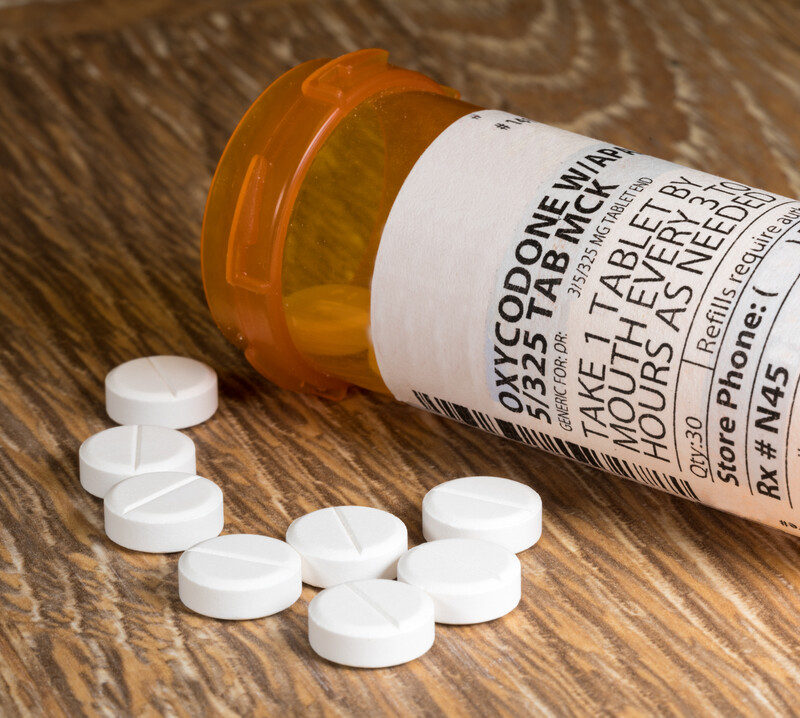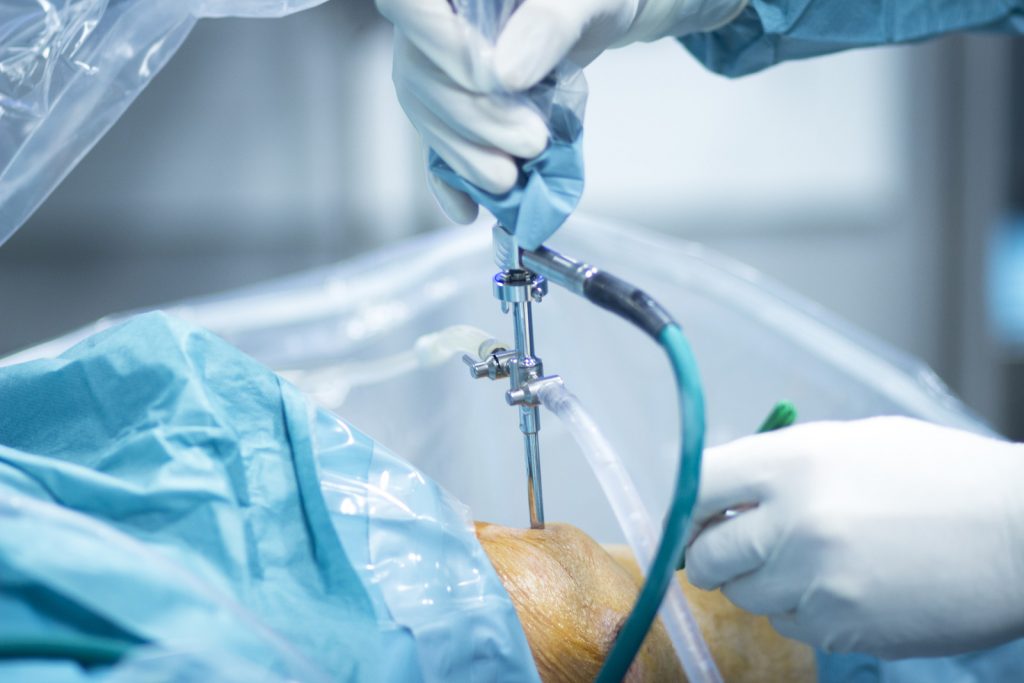
As you will see in the research below, surgeons suggest that there will be a need for some type of opioid usage after arthroscopic knee surgery, whether it is meniscus surgery or knee ligament surgery. As effective as opioids can be there are obvious and well documented concerns about opioid usage. At the top of the list is Opioid Dependency. Opioids are a narcotic. Narcotics can be addictive.
A September 2021 research report writes (1) : ” Over-prescribing opioids after sports orthopaedic surgeries is widespread. In this study, (the researchers) found that patients are being prescribed 2.48 times greater opioid medications than needed following sports orthopaedic surgical procedures. (The study authors) recommend surgeons take care when prescribing postoperative pain control and consider customizing their opioid prescriptions on the basis of prior opioid usage, anatomic location and procedure type. (They) also recommend educating the patients on proper disposal of excess opioids and consider involving pain management for patients likely to require prolonged opioid usage.”
In this study, the researchers followed patients receiving a sports related procedure within a one-year period.
- Included were 223 patients with an average age of about 33 years old.
- Surgeons prescribed an average mean total of 59.5 pills, and patients reported consuming a mean total of 20.9 pills, resulting in a utilization rate of 40%. (The problem noted is that where did these other pills go? No one told the patients how to get rid of them). In fact 94.4% of patients received no education on how to properly dispose of unused opioids.
Assessing the injury and surgery:
- The mean SANE score (requires the patient to rate their knee function on a scale of 0 to 100 – 100 being normal) was 53.9 (a little more than half what the patient would consider normal).
- The mean Pain Catastrophizing Scale score was 15.1. MILD (mild = 0 to 34; moderate = 35 to 67; and severe = 68 to 100)
- The mean Opioid Risk Tool was 3.3. (A score of 3 or lower indicates low risk for future opioid abuse, a score of 4 to 7 indicates moderate risk for opioid abuse)
- The procedures were broken down into:
- 47.5% ligamentous knee repair,
- 18.4% shoulder arthroscopy/other shoulder,
- 7.6% meniscus surgery,
- 7.6% shoulder arthroplasty,
- 5.4% distal biceps,
- 4.0% lower leg (ankle/foot/tibia) and
- 4.0% shoulder open reduction and internal fixation
Conclusion: Over-prescribing opioids after sports orthopaedic surgeries is widespread. In this study, we found that patients are being prescribed 2.48 times greater opioid medications than needed following sports orthopaedic surgical procedures. We recommend surgeons take care when prescribing postoperative pain control and consider customizing their opioid prescriptions on the basis of prior opioid usage, anatomic location and procedure type. We also recommend educating the patients on proper disposal of excess opioids and consider involving pain management for patients likely to require prolonged opioid usage.
Opioids after arthroscopic partial meniscectomy
A September 2020 study (2) wrote: “Orthopaedic surgeons have a responsibility to develop responsible opioid practices. The researchers of this study suggested then that “after knee arthroscopic surgery with partial meniscectomy, patients who were provided a prescription for opioids and instructed to only fill the prescription if absolutely necessary for pain control would take fewer opioids than patients with opioids automatically included as part of a multimodal approach to pain control prescribed at discharge.”
To test their hypothesis, the researchers dived patients into two groups. “Patients undergoing arthroscopic partial meniscectomy were provided multimodal pain control with aspirin, acetaminophen, and naproxen and randomized to receive oxycodone as either included with their multimodal pain medications (group 1) or given an optional prescription to fill (group 2). Patients were contacted at time points up to 1 month after surgery to assess opioid utilization and medication side effects.
- There was no significant reduction in the number of tablets utilized between groups 1 and 2 (3.5 tablets less taken (patients who were told to take the opioids) vs 4.5 less taken tablets (patients in the optional fill the prescription group).
- Days that opioids were required (2.2 less days in (patients who were told to take the opioids) vs 3.2 days (patients in the optional fill the prescription group).
- The group with the option to fill their prescription had significantly fewer unused tablets remaining than the group with opioids included as part of the multimodal pain control regimen (75% of potentially prescribed tablets vs 82% of prescribed tablets.)
- Overall, 37% of patients did not require any opioids after surgery, and 86% used less than 8 tablets.
Conclusion: “Patients required a minimal number of opioids after knee arthroscopic surgery with partial meniscectomy. There was no difference in the number of tablets utilized whether the opioid prescription was included in a multimodal pain control regimen or patients were given an option to fill the prescription.”
Opioids may not be necessary in all knee arthroscopic patients
An April 2020 study (3) made this suggestion: “Opioids may not be necessary in all patients, particularly after meniscal surgery and in comparison with anterior cruciate ligament reconstruction. For patients requesting opioids for pain relief, reasonable prescription quantities are 5 oxycodone 5-mg pills after arthroscopic meniscal procedures and 20 5-mg pills after anterior cruciate ligament reconstruction. Slowing the current opioid epidemic and preventing future crises is dependent on refining prescribing habits. Clinicians should strongly consider patient education regarding expected pain as well as pain management strategies. ”
Summary:
Knee arthroscopic surgery is an elective procedure. It means you elect to have it. The surgery can be a good option for many patients. For many people it may be the only option. However there can be issues with post-surgery recovery.
Do you have questions about your knee pain? Ask Dr. Darrow
A leading provider of stem cell therapy, platelet rich plasma and prolotherapy
11645 WILSHIRE BOULEVARD SUITE 120, LOS ANGELES, CA 90025
PHONE: (800) 300-9300 or 310-231-7000
1 Capelle JM, Reddy PJ, Nguyen AT, Israel HA, Kim C, Kaar SG. A Prospective Assessment of Opioid Utilization Post-Operatively in Orthopaedic Sports Medicine Surgeries. Archives of Bone and Joint Surgery. 2021 Sep;9(5):503.
2 Hartwell MJ, Selley RS, Terry MA, Tjong VK. Can we eliminate opioid medications for postoperative pain control? A prospective, surgeon-blinded, randomized controlled trial in knee arthroscopic surgery. The American Journal of Sports Medicine. 2020 Sep;48(11):2711-7.
3 Lovecchio F, Premkumar A, Uppstrom T, Stepan J, Ammerman B, McCarthy M, Stein BS, Pearle A, Taylor S, Kumar K, Albert T. Opioid consumption after arthroscopic meniscal procedures and anterior cruciate ligament reconstruction. Orthopaedic Journal of Sports Medicine. 2020 Apr 24;8(4):2325967120913549.
1012 +3



